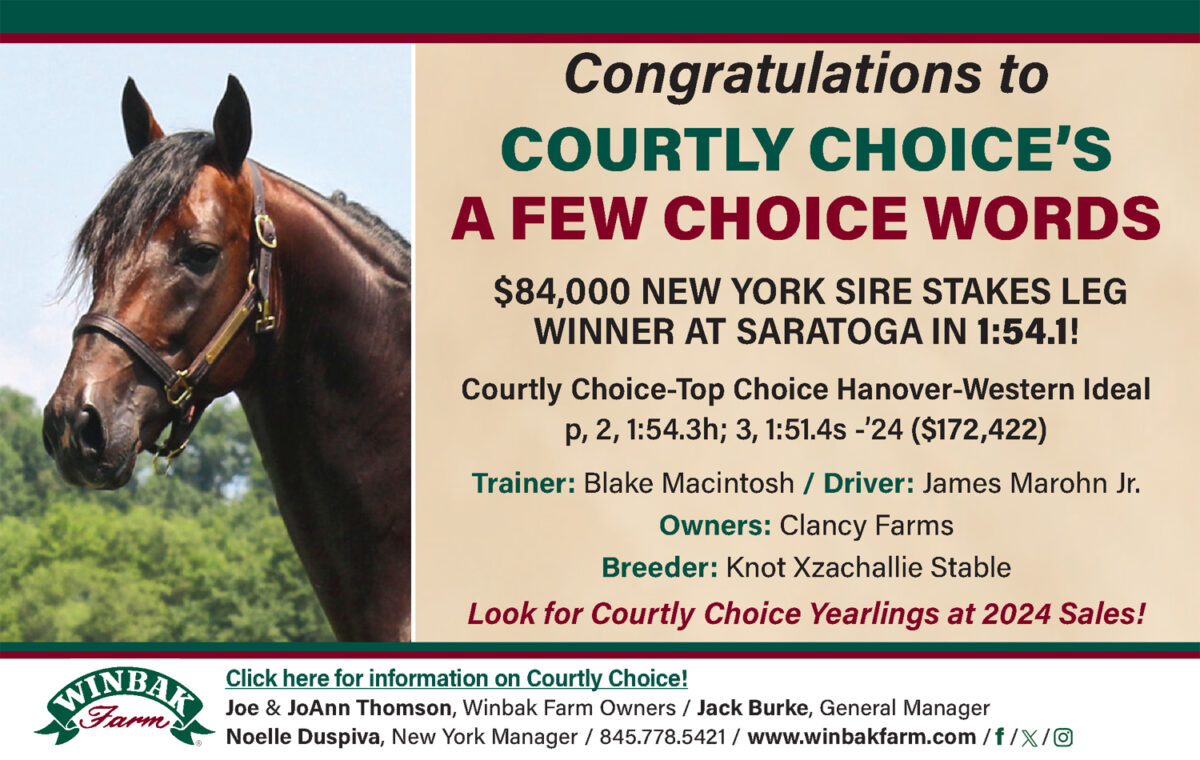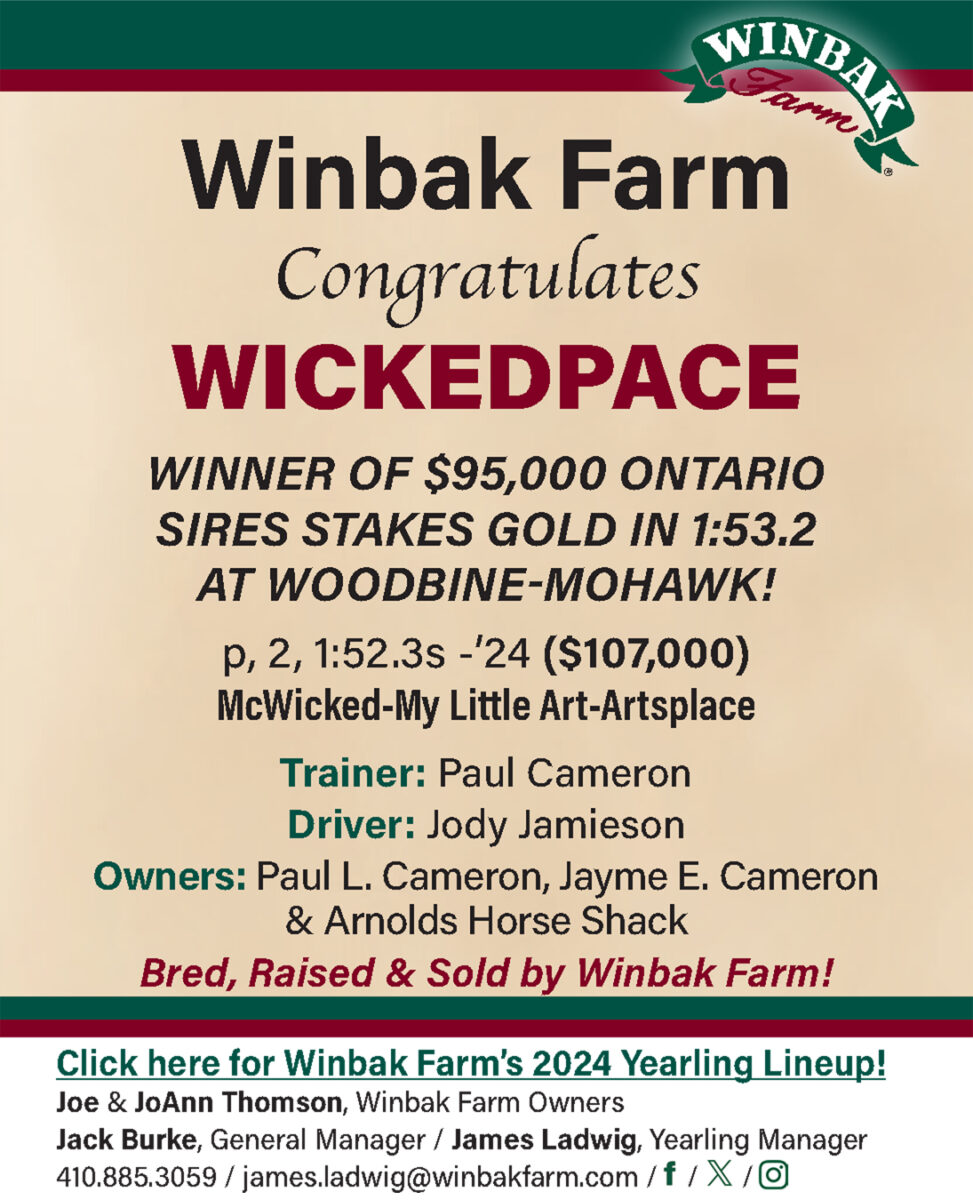

It’s time for new Triple Crowns of harness racing
by Brett Sturman
Woodbine Mohawk Park’s communications and content manager Mark McKelvie innocently floated the idea in a social media post this week that it’s past time for a realignment of harness racing’s pacing and trotting Triple Crowns. He suggested the Pepsi North America Cup – which has eliminations this weekend – and the Canadian Trotting Classic, both held at Woodbine Mohawk, be included in the pacing and trotting Triple Crowns, respectively.
I’ll second that.
McKelvie’s suggestion came on the heels of the announcement that Yonkers is shortening its season as an austerity measure against purse shortfalls related to the ongoing pandemic. By concluding the season on Sept. 12, the Yonkers Trot and Messenger Stakes will not be conducted this year. Both stakes are Triple Crown races.
A few years ago in HRU, Dean Hoffman penned a wonderful history of harness racing’s Triple Crown. Though well-intentioned at its advent, the Triple Crown carries little meaning in modern times. Pacing and trotting Triple Crowns are rarely accomplished in the sport. Not because it’s necessarily difficult, but because it doesn’t matter enough for horses to even attempt it. Now, with the Yonkers Trot and Messenger States being done away with on the year without a passing glance, McKelvie is correct in that now is the time to take action on an entirely new Triple Crown concept. It should be a concept that is regarded as prestigious, and one where if a horse is successful could sharply increase a horse’s value at stud.
For starters, there needs to be continuity between the races. Today, all the Triple Crown races on both sides of the gait are treated as independent events where horses have to be individually nominated to each race. It’s commonplace for horses to be staked to some of the races but not others. What’s the point of the Triple Crown if horses aren’t even eligible to race in all jewels to start with? The thoroughbred industry, from which harness racing’s Triple Crown took its inspiration, has the right idea.
In that industry, an owner nominates to the Triple Crown series as a single event. Included in the nomination is the Kentucky Derby, Preakness and Belmont. Horses can choose from any or all of them to race in, but the idea behind is that you don’t have to worry about winning one race and then having to supplement or not even be eligible to another event as is the case in harness racing. Our industry should do similar.
Ultimately, the (controversial) question becomes what races should consist of the harness Triple Crowns and what tracks should host those. If it were up to me, leading criteria should be visibility. Races in the Triple Crown need to occur where they’ll be most widely viewed and most widely wagered on. Today, there’s something extremely anticlimactic in watching a supposed Triple Crown race take place with few live fans and small betting pools. The Triple Crowns would exist largely to generate enthusiasm in the sport, and that’s not going to happen at less attended venues.
Next, the Triple Crown races should be held exclusively on tracks with larger sized ovals. The big tracks are the ones that naturally bring in the highest handle because it gives horses and bettors the fairest chance. I get that part of the current Triple Crown allure is the ability to win on a series of different sized racetracks, but the accomplishment should really be based more on pure ability and lesser on the post draw. Drawing post 10 on a mile track is a disadvantage for sure, but it’s far better than a death sentence of post 8 on a half-mile track. The half-mile track can be such a deterrent that two years ago Stay Hungry shunned an imminent Triple Crown attempt when scratching shortly before the final heat of the Little Brown Jug when saddled with an outside post.
With those factors in mind, Woodbine Mohawk Park should absolutely have a role in a new Triple Crown scenario. Handle and attendance at the Campbellville, ON track are tops in the industry next to the Meadowlands and their signature events are second to none. For example, accompanying next week’s North America Cup final for 3-year-old colt pacers will be the Fan Hanover, Roses Are Red and Armbro Flight, additional events for 3-year-olds on the female and trotting side with purses for those four races alone totaling over $2 million.
Agreeing with McKelvie, the North America Cup and Canadian Trotting classic would be ideal fits as both races already draw the elite 3-year-old colt pacers and trotters. In a normal year, the North America Cup takes place in June, and would kick off the pacing Triple Crown. On the trotting side, the Canadian Trotting Classic would be the second leg of the trotting Triple Crown, taking place two months after the Hambletonian kicks things off.
Starting with the North America Cup, the next Triple Crown event in the pacing Triple Crown would become the Meadowlands Pace. Many people may be shocked to know that the Meadowlands Pace isn’t already a Triple Crown event, but somehow it isn’t. Most of the top 3-year-old pacers that race in the North America Cup already contest the Meadowlands Pace and adding these two races as 1-2 in the new Triple Crown would formalize the relationship of those two races.
With Woodbine Mohawk Park and the Meadowlands playing host to the first two legs of each Triple Crown, the final leg for both pacers and trotters would conclude at the Red Mile. The Kentucky Futurity for trotters at the Red Mile already is the final leg of the trotting Triple Crown, and that would remain as is. On the very same day perhaps on an early fall October afternoon, an event could be added to complete the pacing Triple Crown. Either the Tattersalls, Bluegrass or some other Grand Circuit race could be repurposed and have its purse increased to be raced on Futurity day with a potential Triple Crown (or two Triple Crowns) on the line.
Think about the excitement that such a scenario could generate and what it could do for the industry. Above all, it would mean something.















